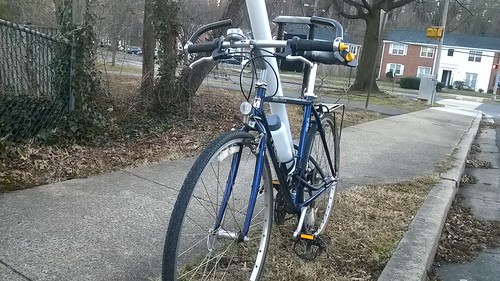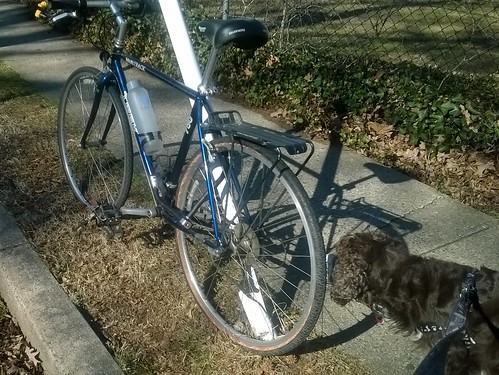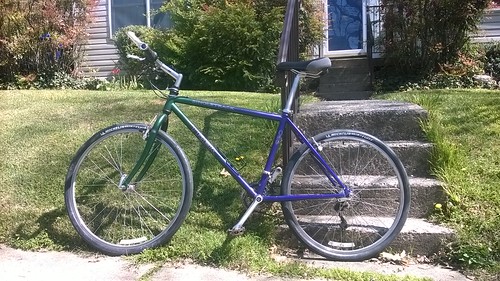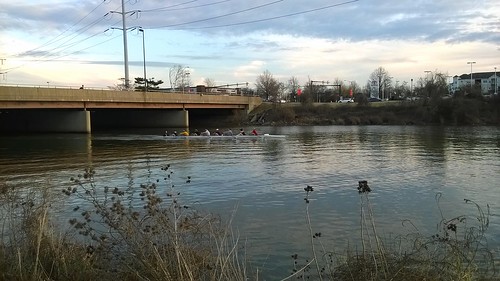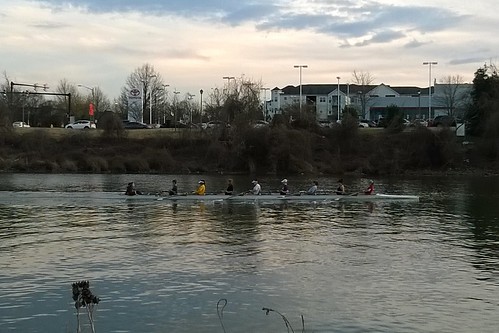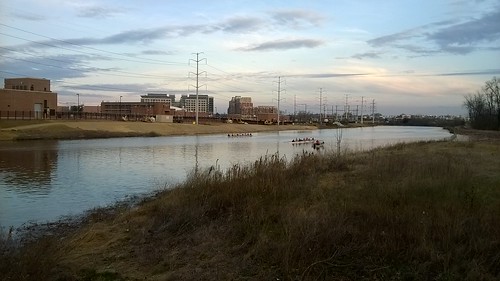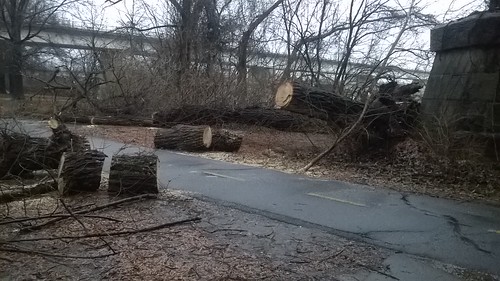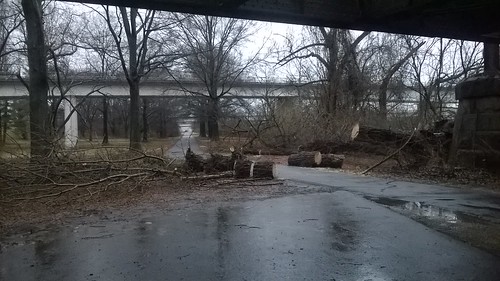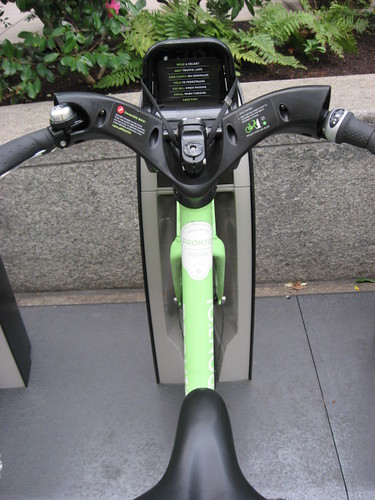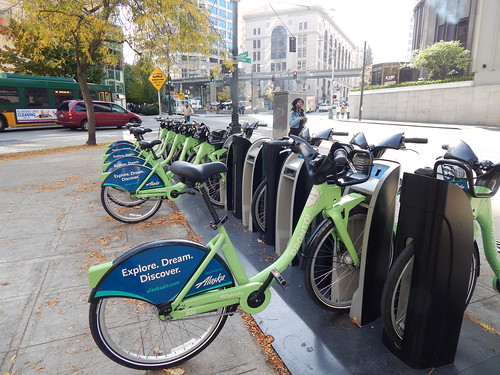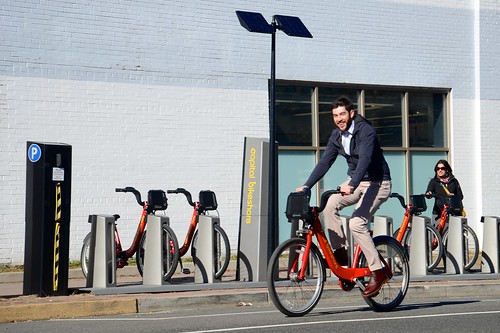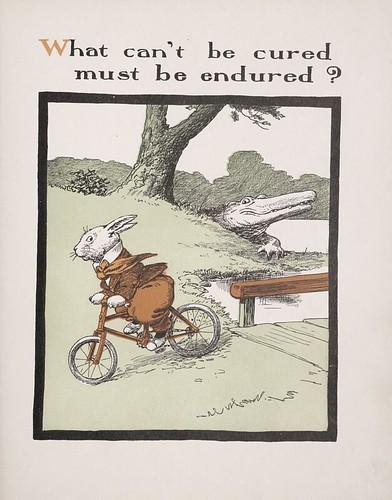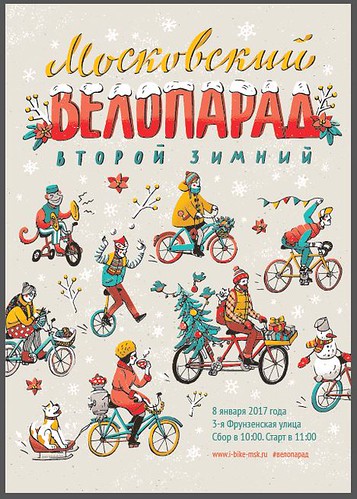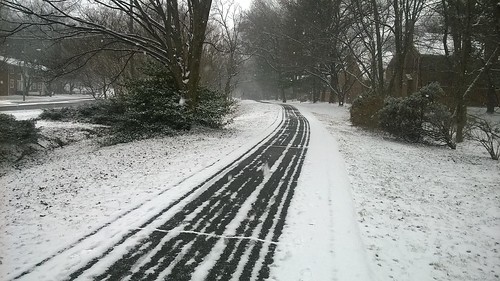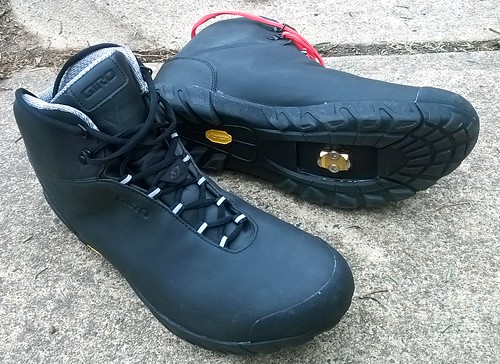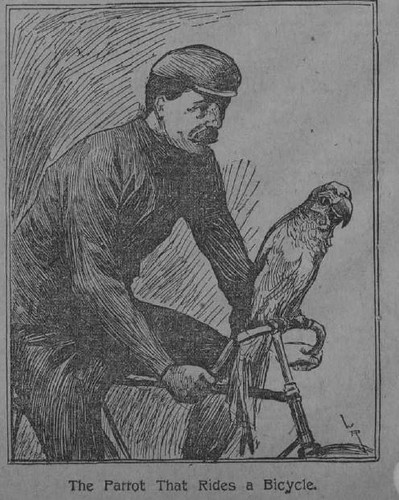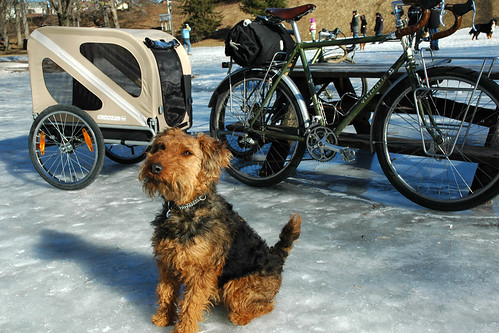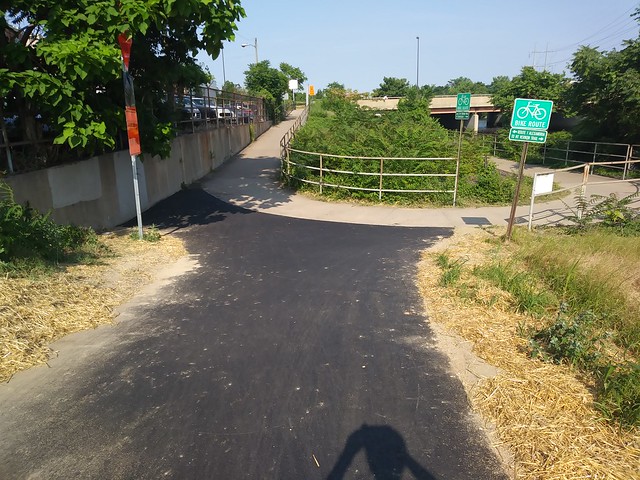
This "intersection" has been widened
This can be a complicated spot for cyclists and pedestrians to negotiate when several come together at once going in several directions. As part of a project to improve the area along the nearby stream, the asphalt was completely redone here.
I was glad to see that a segment of fence was moved so that it was no longer aligned with the concrete walkway. Previously when riding towards the concrete walkway from the asphalt while turning to the right the end of the steel fence could be something a rider could end up crashing into if anything went wrong. That risk is now reduced - good!
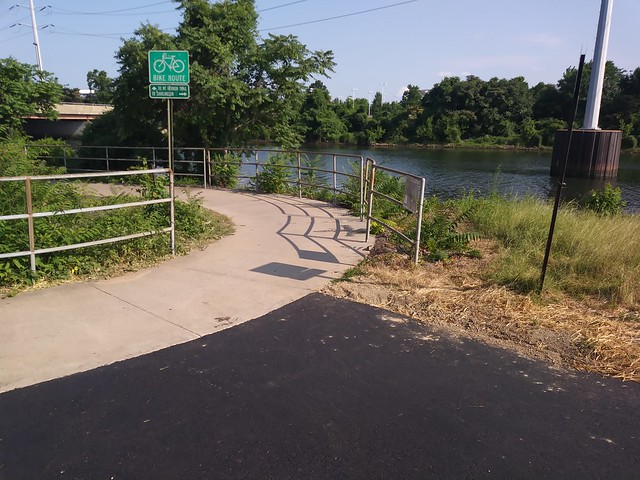
Fence has been moved away from concrete walkway
Oddly though gentle curve of the asphalt edge along the right is straightened out for about the last two feet. A reasonable principle of road design is that the curve of the roadway should be consistent and predictable - it seems neither of those that it straightens out. Now of course this is in plain sight, but when riding and paying attention an oncoming bicycle and possibly walkers or runners, it is better if the edge of the path is laid out predictably, not oddly.
It almost certainly looks like a small thing, but over almost twenty years of commuting and other riding, it is just this kind of thing that I have negotiated poorly, leading to dumb falling accidents. Now the asphalt part of the intersection is much wider, but when turning to the right the concrete walkway is just the same relatively narrow width as it was before and a rider will naturally gravitate as far as possible to the right while making the turn when there is an oncoming bicycle.
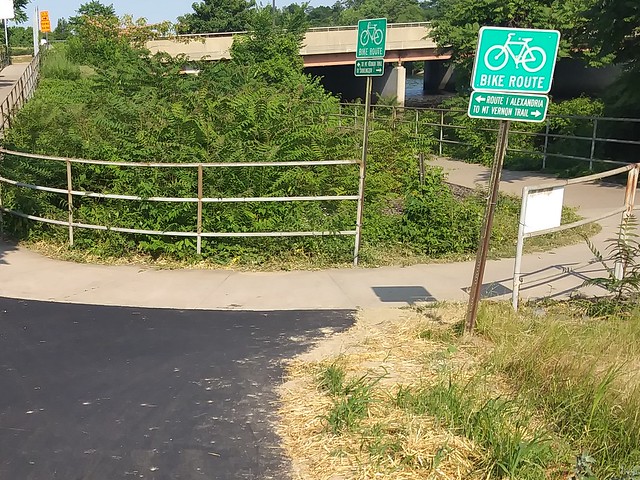
Asphalt curves to right but straightens last two feet or so for no obvious (good) reason
It's great that there is more asphalt to help reduce some of the difficulty navigating this intersection and that the fence was moved, but the one detail could have been better. Well, in my view anyway.


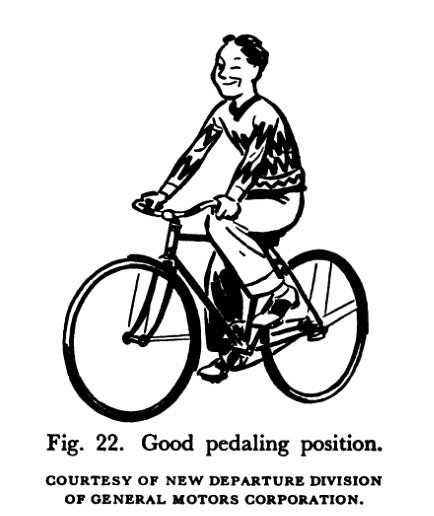
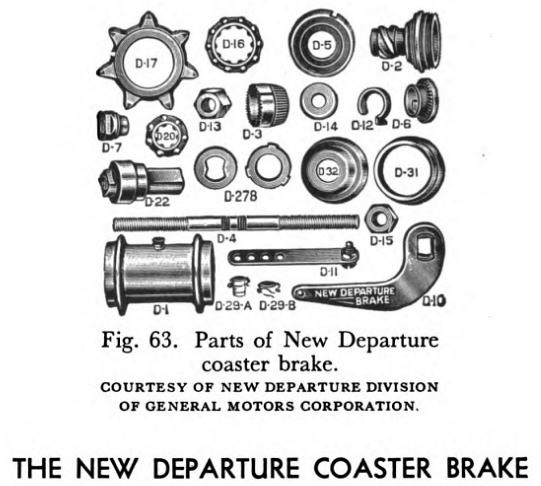
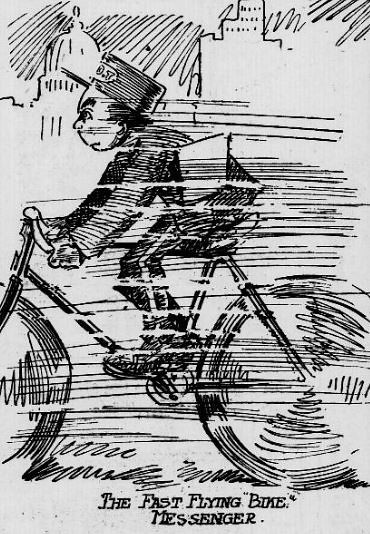
![Bike story [Bicycle rental store, District Hardware]](https://c1.staticflickr.com/5/4193/33834706174_3da524a16b.jpg)

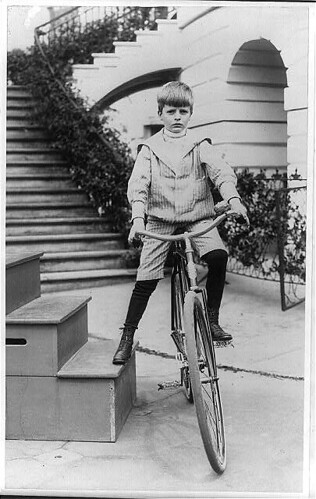
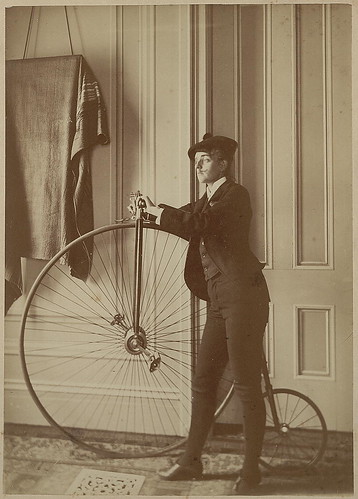
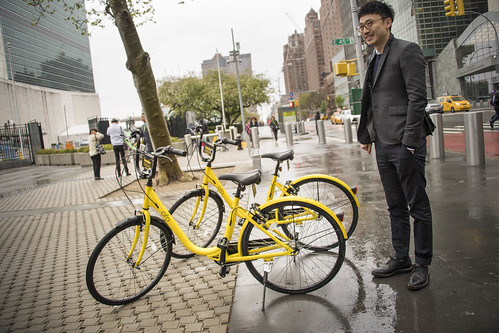
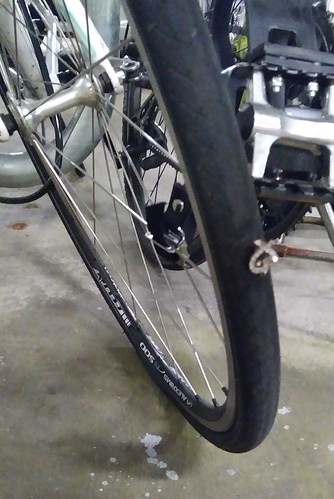
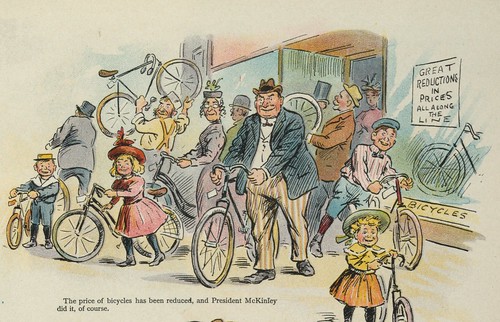
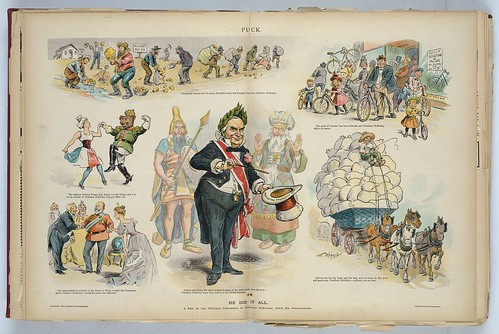
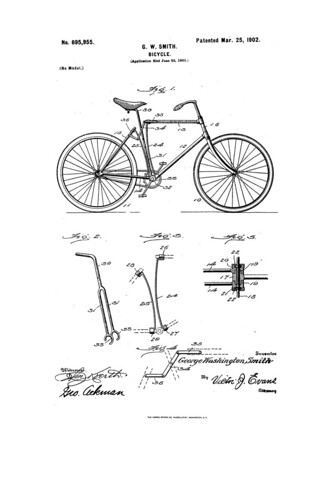

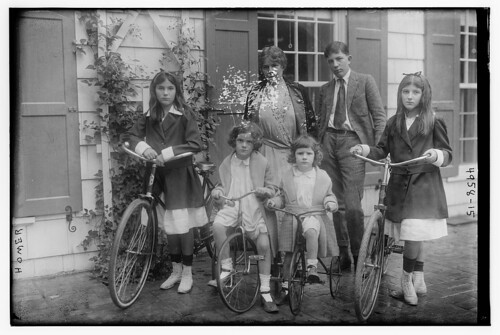
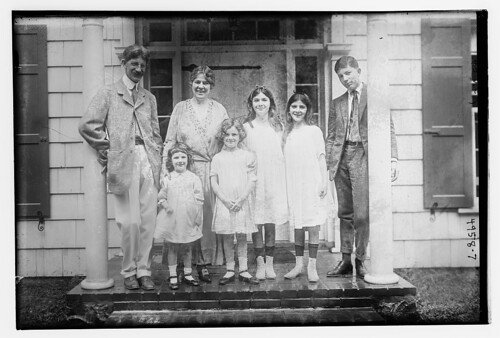
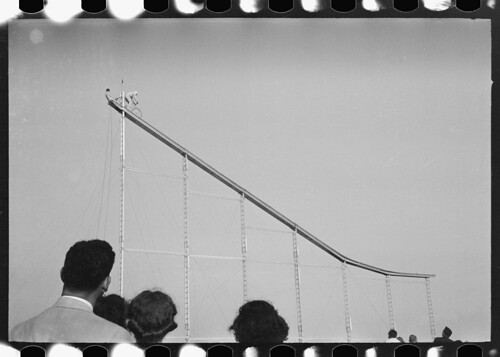
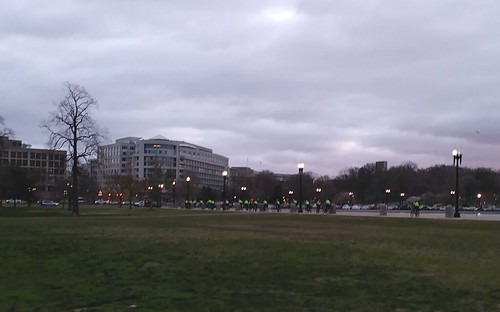

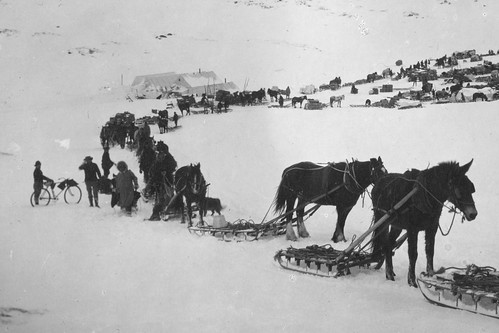
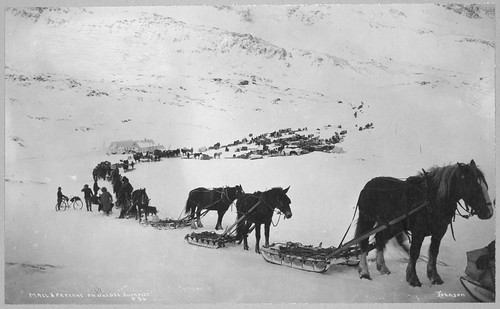



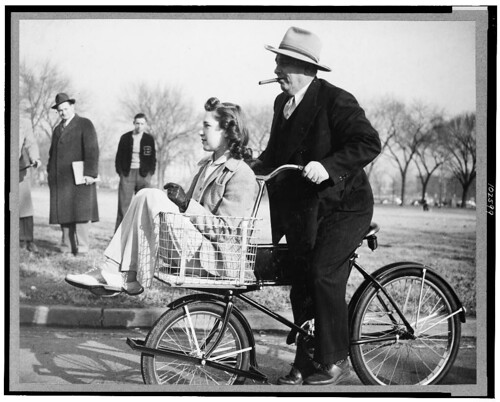
![Bicycle shelter, National Cash Register [Company], Dayton, O[hio]](https://c1.staticflickr.com/4/3930/32957219582_6be3423ffb.jpg)
![Bicycle shelter, National Cash Register [Company], Dayton, O[hio] - detail](https://c1.staticflickr.com/4/3932/32297952553_b6cf485972.jpg)
